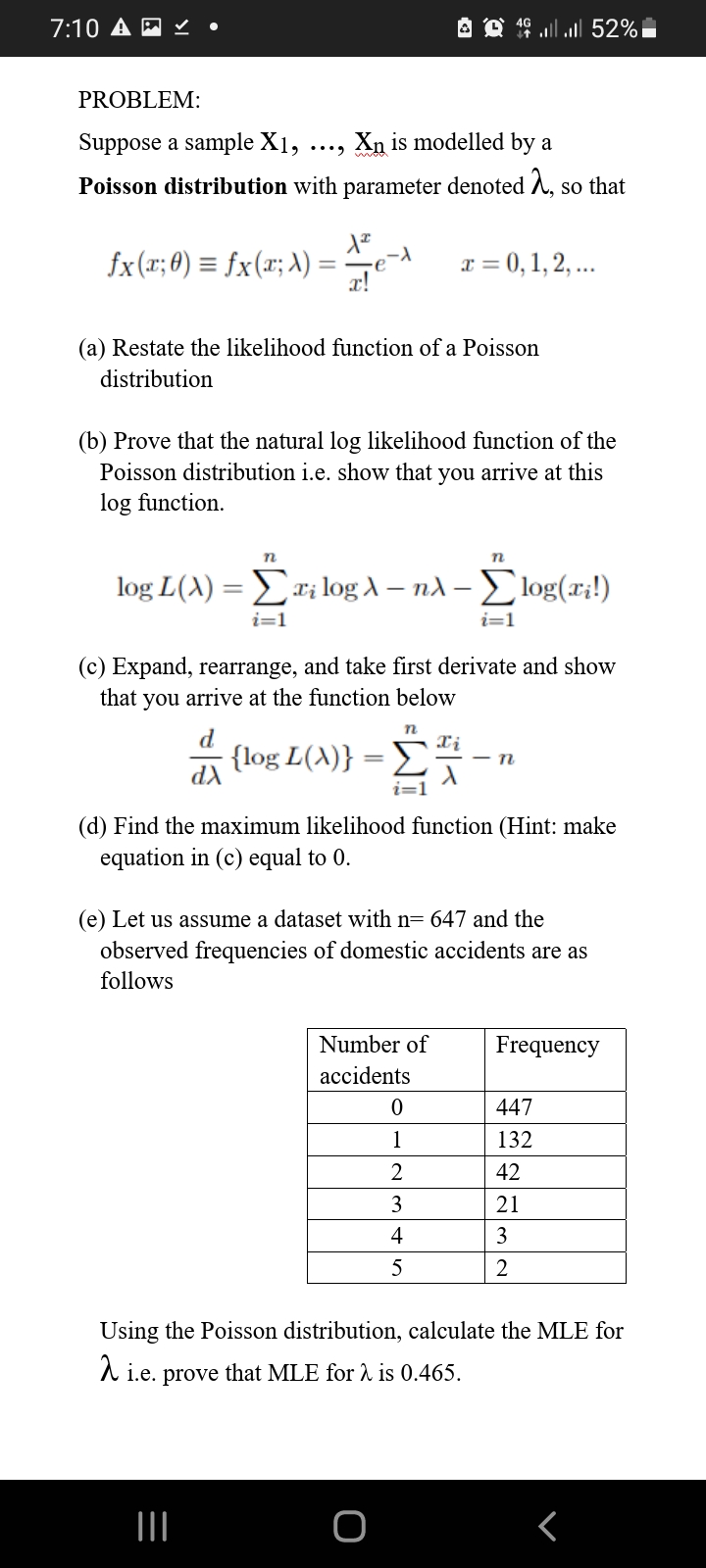Question
NOTE: Steps involved in calculating parameters using MLE in normal distribution, exponential distribution, and poisson distribution are the same - though the likelihood functions are
NOTE: Steps involved in calculating parameters using MLE in normal distribution, exponential distribution, and poisson distribution are the same - though the likelihood functions are different. STEPS involved:
1. Restate the likelihood function (different for normal, exponential and poisson) 2. Take the natural log of the likelihood function 3. Expand and rearrange the log likelihood function 4. Take the first derivative of the log function 5. Set the final equation (in 4) after the first derivative and set it to 0 6. Find the MLE estimator Attached below are questions

Step by Step Solution
There are 3 Steps involved in it
Step: 1

Get Instant Access to Expert-Tailored Solutions
See step-by-step solutions with expert insights and AI powered tools for academic success
Step: 2

Step: 3

Ace Your Homework with AI
Get the answers you need in no time with our AI-driven, step-by-step assistance
Get Started


